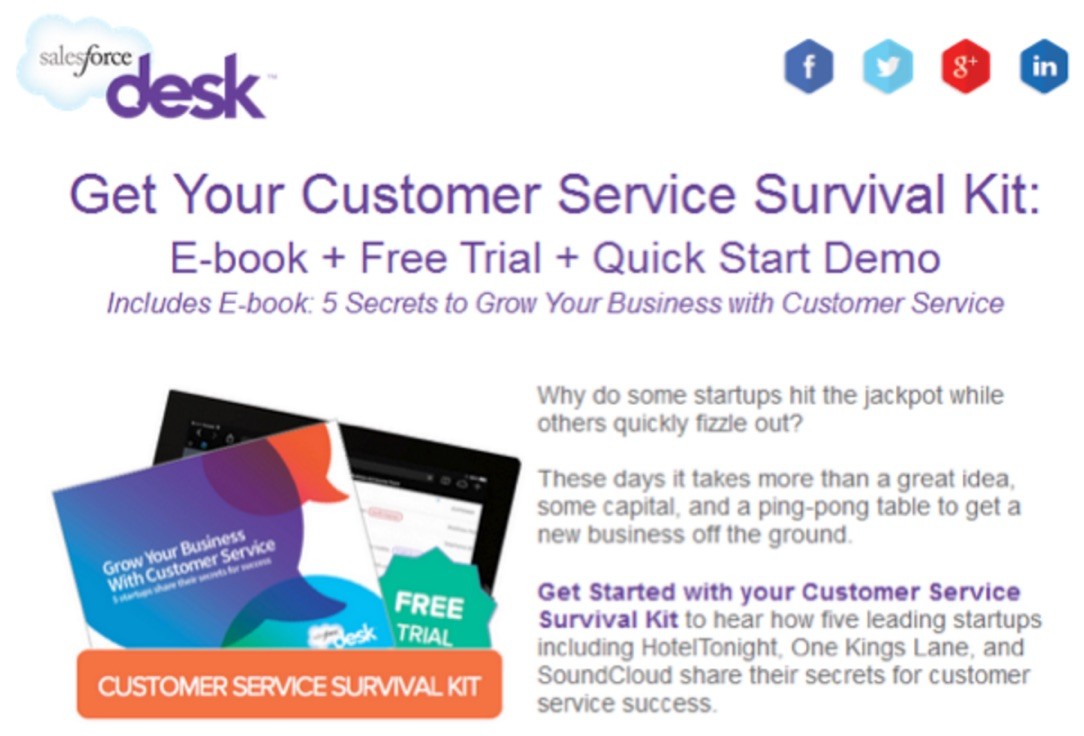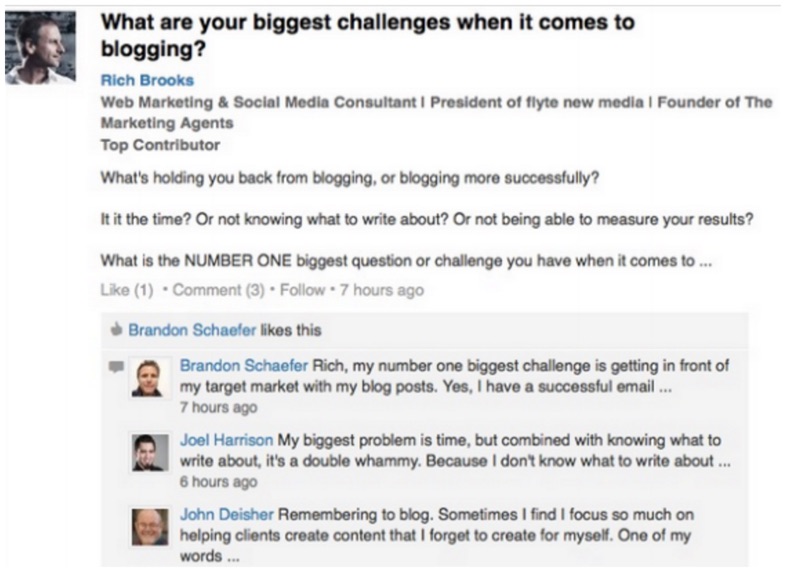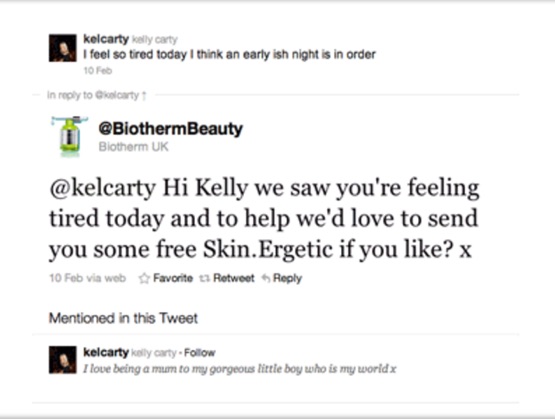
21 May 5 Winning Strategies for Using Human-Driven Lead Nurturing
[ad_1]
Lead nurturing requires a human touch.
According to MarketingSherpa, “79% of marketing leads never convert into sales [and] lack of lead nurturing is the common cause of this poor performance.”
In a world of automation, marketers tend to forget the power of human connection. It only takes a small change, like personalizing a white paper or mentioning someone’s first name in an email.
Lead nurturing is too important in your sales cycle for non-customized messaging. You want prospects to know that you value their potential business.
Ditch your robot responses. Enhance your lead nurturing campaigns with these five human-driven strategies.
1. Email That Connects
Decades ago, receiving email was an enjoyable experience. People loved hearing AOL’s “You’ve got mail!” It signaled that someone sent a message just for you.
Nowadays, your customers dread their inbox. Most of the time, it’s filled with unwanted messages and worthless subscription emails.
Give your readers something to look forward to. Wow them with content that matches their needs.
“Leads who have expressed initial interest need a general welcome and introduction to your product and industry, while others might have already reached the bottom of the funnel and are more interested in advanced content such as case studies and white papers,” writes Valerie Levin, marketing at Oktopost.
Create email campaigns that motivate users to take action. The call-to-action should be a natural next step in the buyer’s journey.
For instance, prospects in the consideration stage may want to know how your company compares to the competition. So, your team may send a comparison chart with features and benefits.
In the example below, Desk helps onboard new clients by offering a free toolkit to strengthen the relationship.

The purpose of email is further the business relationship. Your team should aim to understand the buyer’s behaviors to predict their future needs.
2. Social Selling
Sam Kusinitz, former Hubspot editorial assistant, defines social selling as the dialogue that occurs “when salespeople use social media to interact directly with their prospects.”
Social selling isn’t anything new. Sales teams have always provided similar value at networking dinners, trade shows, and promo events.
Even though the communication channel has changed, the message should stay the same.
Focus on answering the customer’s questions and engage in conversations that offer solutions.
Train your team to nurture leads via Linkedin, Twitter, and Facebook. They should provide prospects with thoughtful content that educates.
With social media listening tools, like Agorapulse, you can learn more about interested buyers and their behaviors.
Who influences them? Who do they follow? What topics grab their attention?
With that qualitative data, you can spark conversations that match their concerns.
Rich Brooks, a web marketing and social media expert, provides blog consulting to his clients. In a Linkedin Group, he crafted a practical question that attracted ideal prospects and ignited a discussion.

Also, be mindful that every social media platform has unwritten etiquette rules.
For example, some people prefer not to read posts about the latest wrestling match on LinkedIn. And some desire only tidbits of information on Twitter. Respect each network’s social norms and then begin lead nurturing.
Social media is another tool to maximize your campaigns. Strive to nurture relationships through authentic interaction.
3. Real-Time Messaging
Technology has transformed the way we communicate. Back in the day, real-time communication involved people actually meeting face-to-face.
Today, businesses are taking advantage of live chat and help desk software to engage prospects online. It’s simple and drastically cut costs.
Moreover, research shows that proactive chats increase ROI by up to 105%.
With live chat, marketing and sales teams can learn about their customers’ goals and what product benefits top are must-haves.
The key is to ask prospects questions during live chat sessions. Without being intrusive, dig deep to find their real motivations.
So, after the “How can I help you?” greeting, teach your team to ask follow-up questions.
Below is a chat session between Annabelle, a Zappos agent, and a customer seeking shoes. Notice how the live chat agent asks questions to provide the customer with better service.

“The customer needs questions answered and wants more information. The live chat representative wants to help the user find what they are looking for and make their user experience as pleasant as possible,” states Jeff Mason, vice president of marketing at Velaro.
In the end, people just want help. When lead nurturing, position your team to give prospects the best service possible.
4. Conversational How-To Videos
Visual content is a powerful tool for any eCommerce business. Video can captivate audiences and quickly engage people.
But video is only effective when customers are actually interested in the topic. Don’t bore your prospective clients with video clips that possess no purpose.
Rather, develop explainer videos that give prospects more insight about your brand and product. You want people to be invested in your message.
“Great video doesn’t change the rules. A great video on your site isn’t enough. You still need permission, still need to seek remarkability, still need to create something that matters. What video represents is the chance—if you invest in it—to tell your story in a way that sticks,” writes Seth Godin, best-selling author and marketer.
The best videos are conversational. They give people an intimate perspective. You want customers to know you care.
Amazon produced a remarkable explainer video for the Echo. It’s a friendly representation of how to demonstrate the benefits of a product. Watch below.
In addition, videos aren’t a one-use tactic. Andrew Angus, Director of Revenue Operations at PlanGrid, states:
“Videos are incredibly versatile; you can post them to the social networks your leads used to find you, integrate them into blog posts, or insert them into emails. In each case, you can customize the video to provide leads and prospects with insight into different aspects of your brand, products, or services.”
Don’t just join the conversation. Use video to be the conversation.
5. Surprise & Delight Experiences
Surprise and delight is a marketing strategy that randomly selects an individual or group of people to receive a gift.
People want to feel special. Use this technique to keep prospects excited about participating in the sales process.
Here’s an example from Biotherm, a French luxury skincare company, on how they surprise and delight their Twitter followers with free samples:

The Ritz-Carlton in Bali knows how to continue to provide their customers with great experiences despite unfortunate events. A family was upset when they learned that the allergy-friendly foods for their son had spoiled on their trip.
After becoming aware of the situation, the hotel’s staff searched the town for the appropriate items. However, none was found.
The executive chef then instructed his mother-in-law in Singapore to buy the products. The Ritz-Carlton then hand-delivered the items to their guests.
Now, that’s going above and beyond service. How can you infuse this into your business?
“Make ‘surprise and delight’ the mantra of your entire company just because it is the right thing to do. The immediate ROI might not show on a spreadsheet, but the loyalty and word-of-mouth it will generate will be worth it. And besides, it’s just the right thing to do,” says Vebeka Guess, a product marketing manager for Adobe Experience Manager.
Treat your leads like royalty. Give them a reason to engage with your brand.
Real People, Real Value
Lead nurturing centers around building relationships. And the best value requires human contact.
Customize email campaigns based on the prospect’s behavior. Use social media to gain valuable insight about your target audience. And create how-to videos that ignite conversation, not boredom.
Start winning. Use human-driven lead nurturing strategies.
About the Author: Shayla Price lives at the intersection of digital marketing, technology and social responsibility. Connect with her on Twitter @shaylaprice.
[ad_2]
Source link
Social Media Agency, Social Media, Digital Marketing, Digital Marketing Agency, Search Engine Marketing, SEO, digital marketing agency dubai, video content marketing, crossfit marketing dubai, video marketing dubai, digital marketing agency abu dhabi, facebook marketing dubai, facebook marketing abu dhabi, digital marketing agencies in dubai, social media agency, content marketing dubai, content strategy dubai, branding dubai

